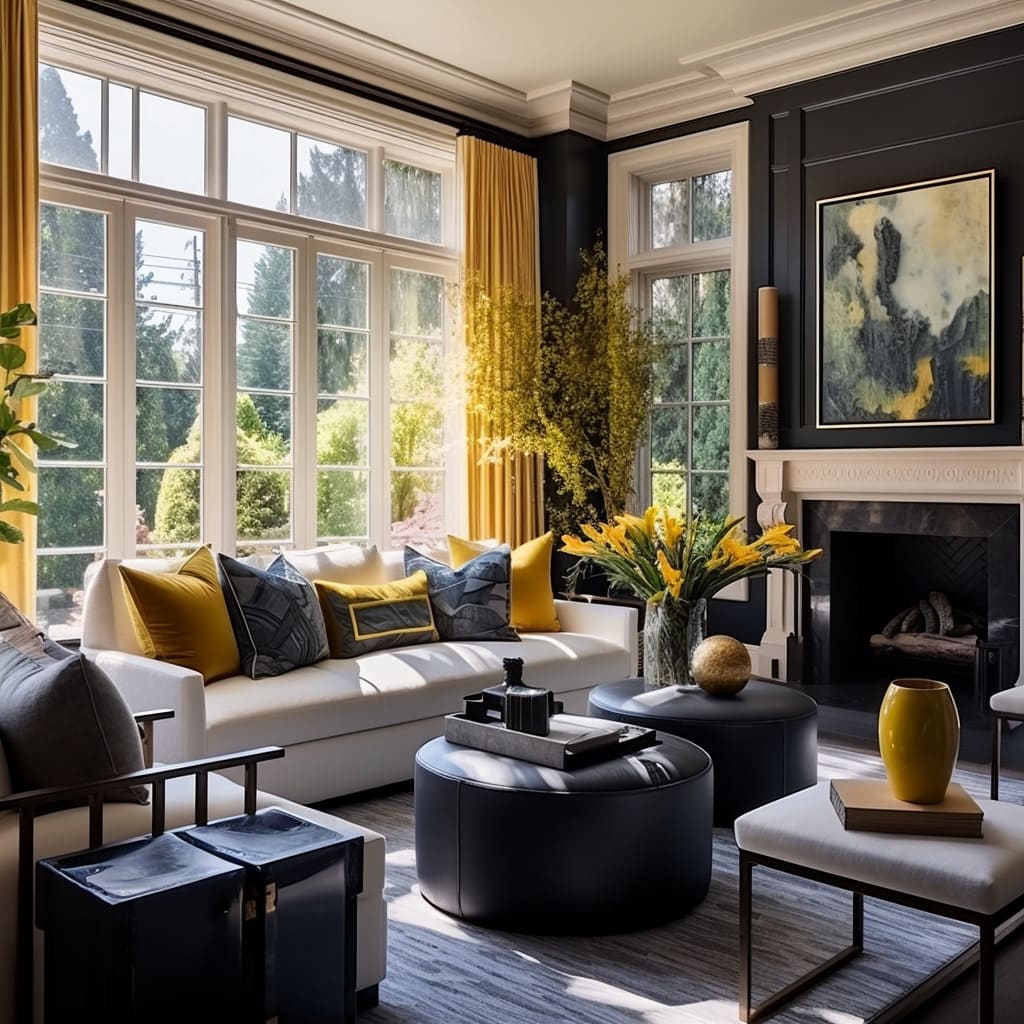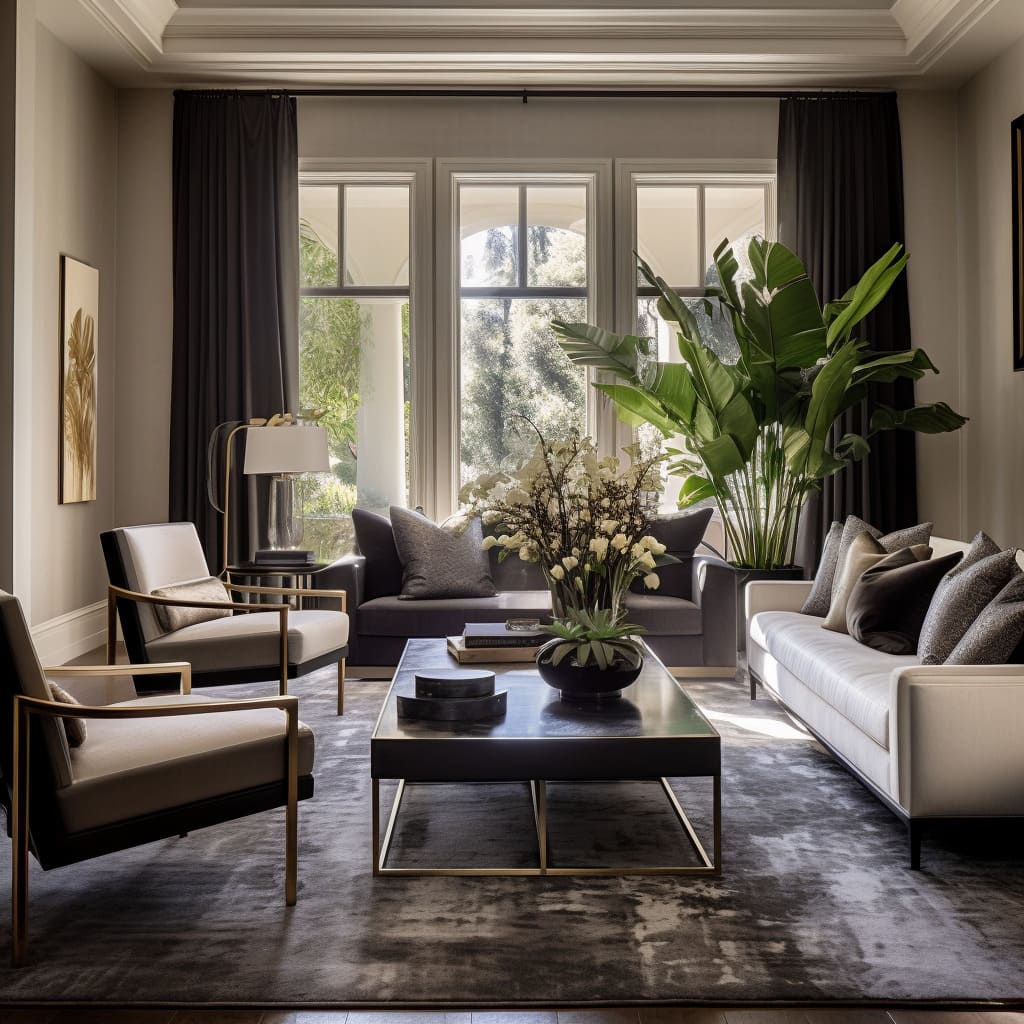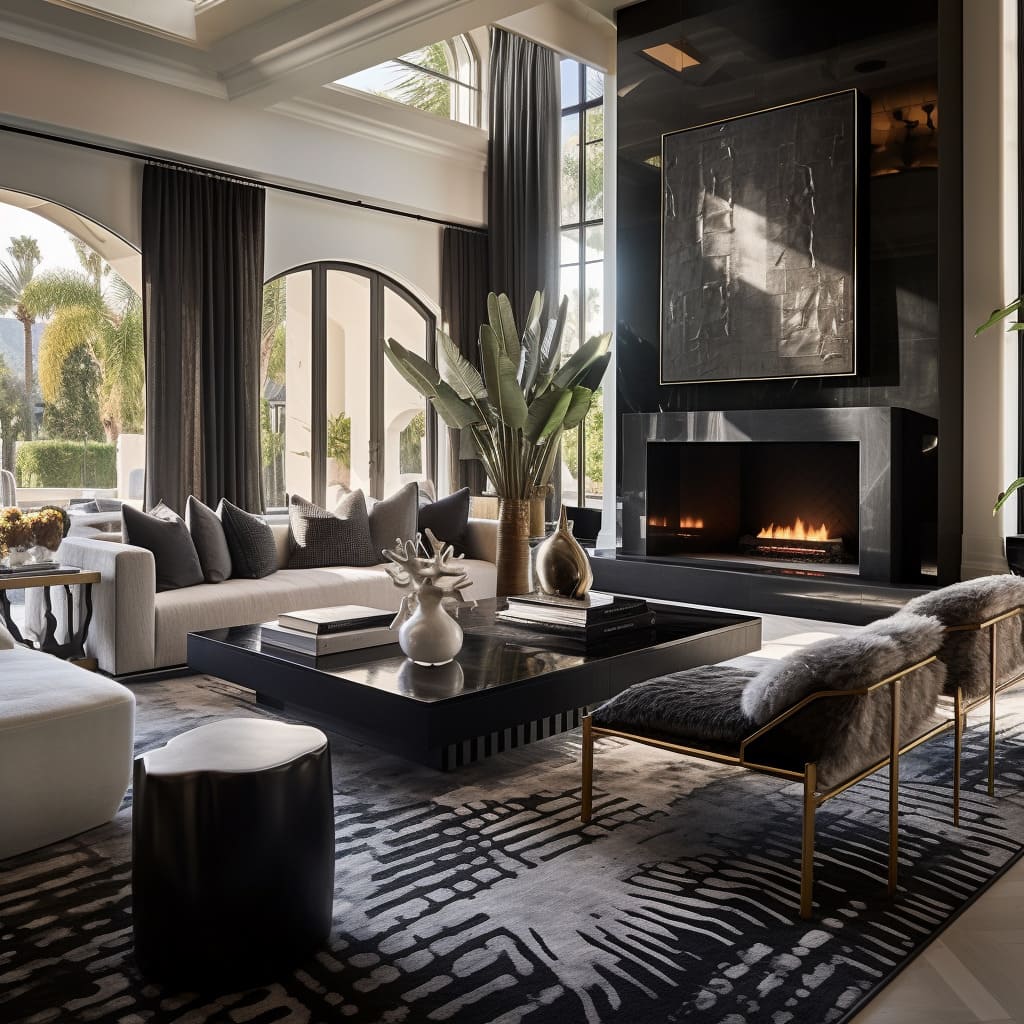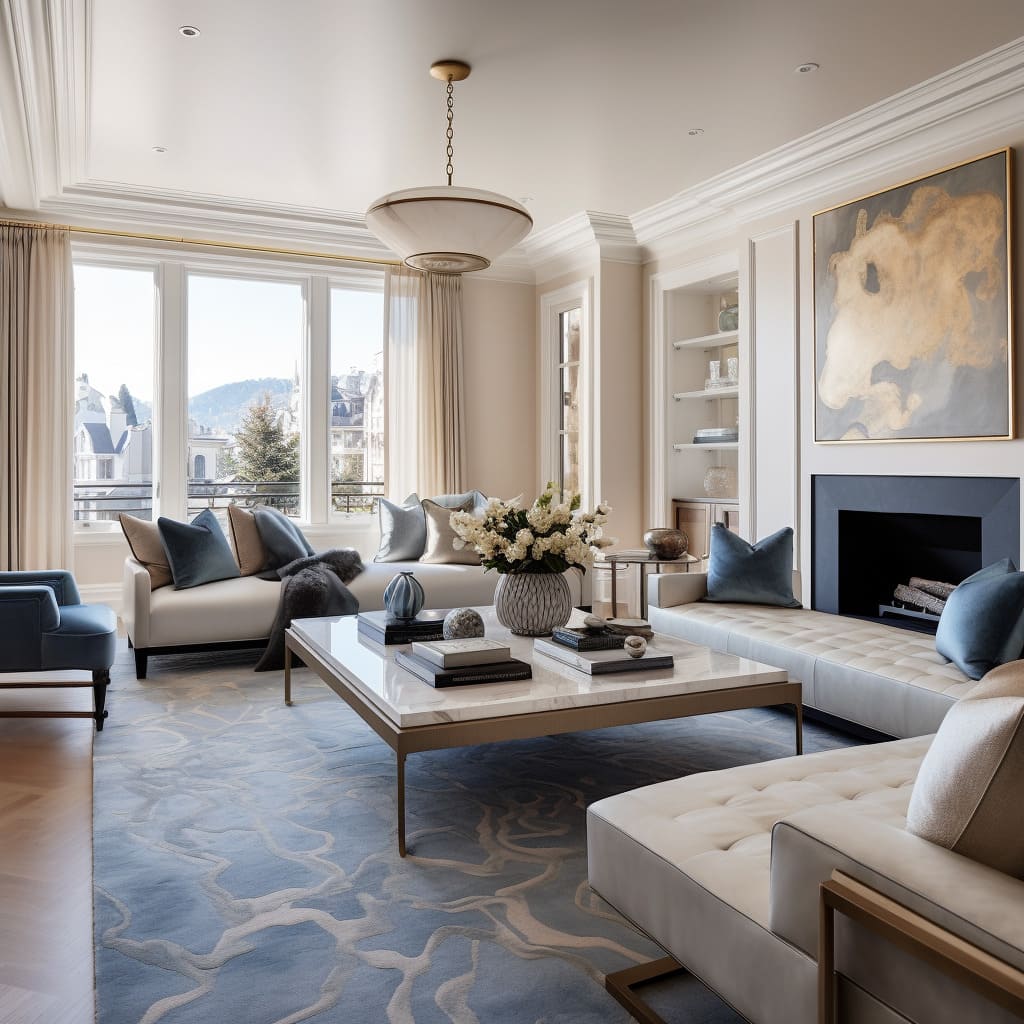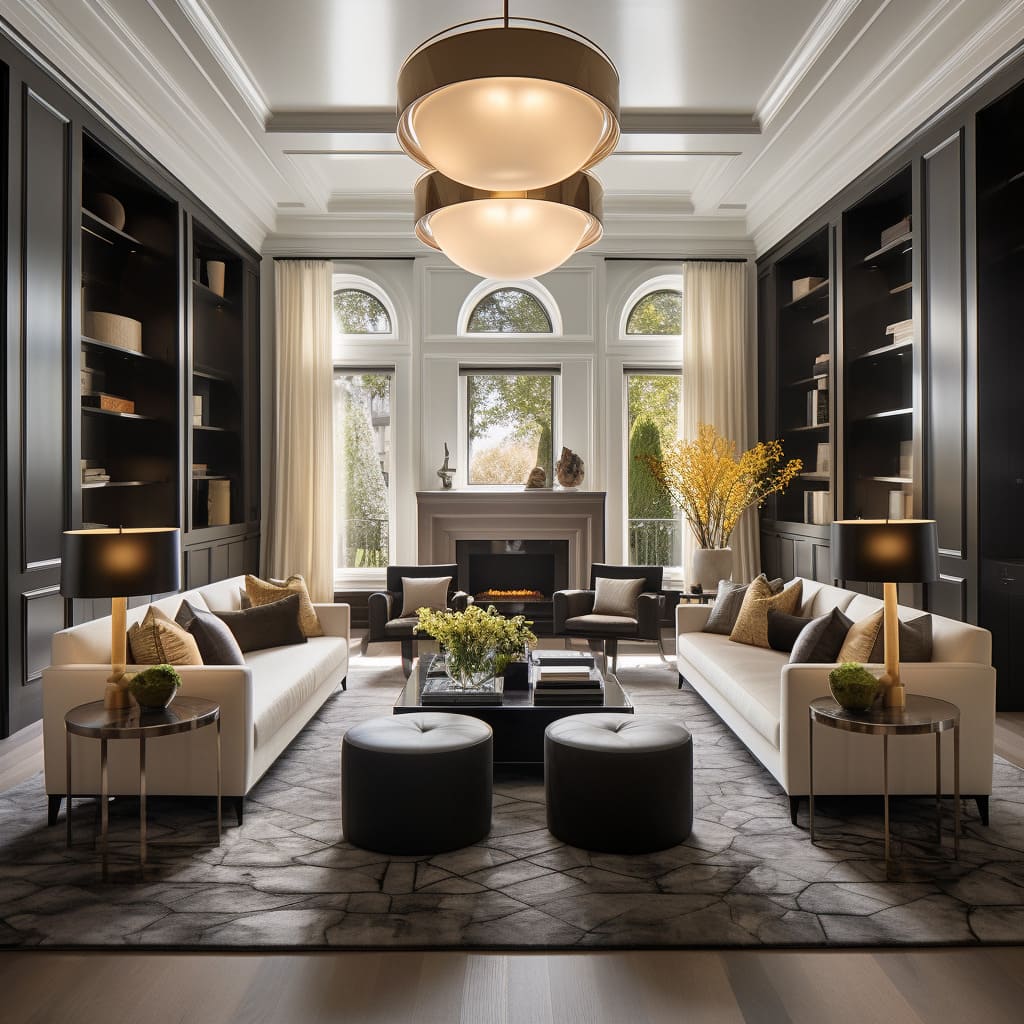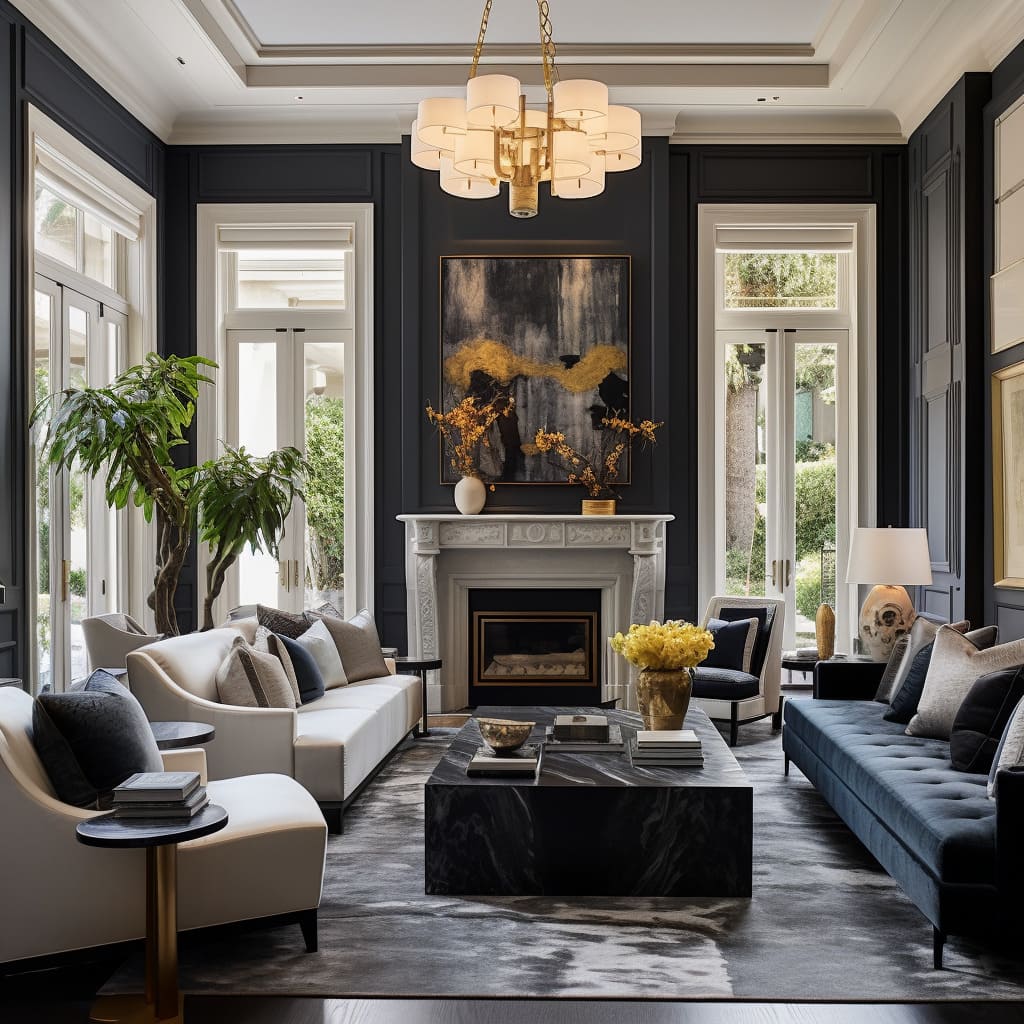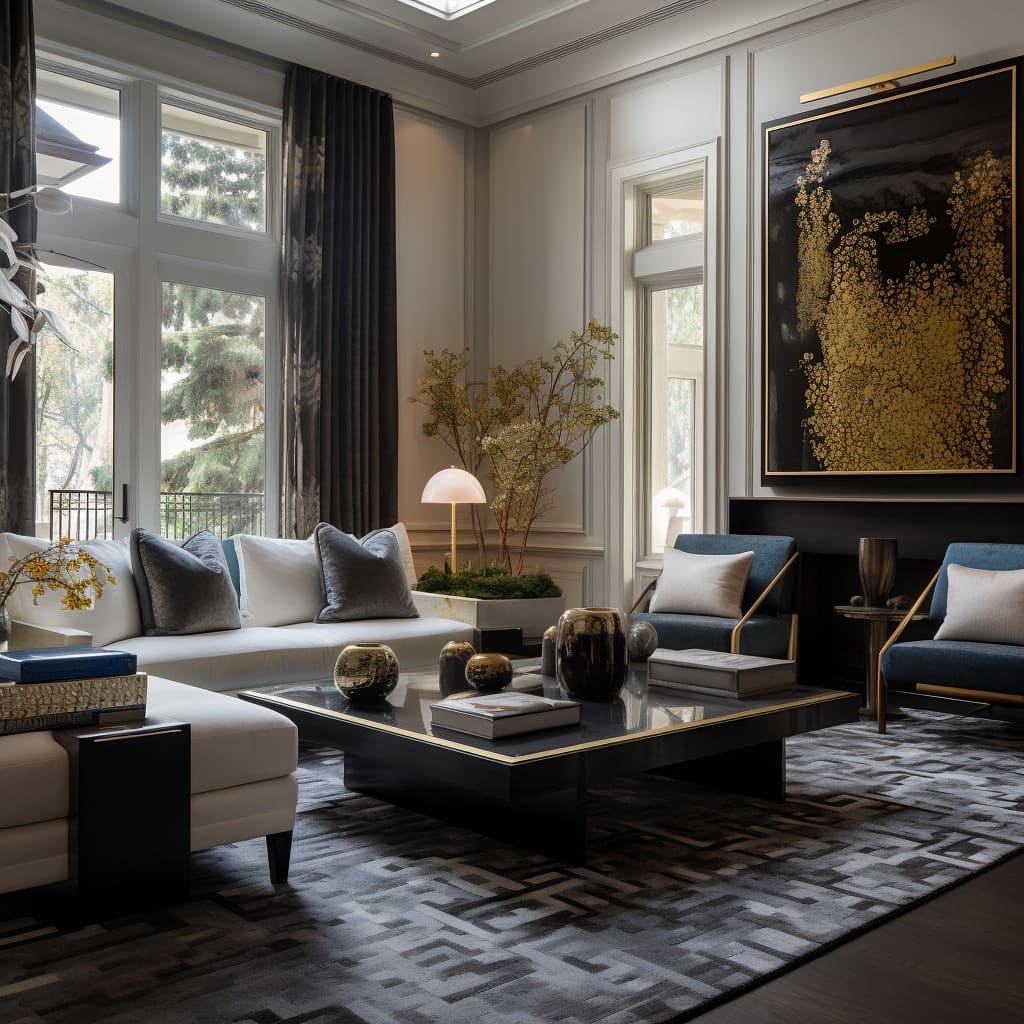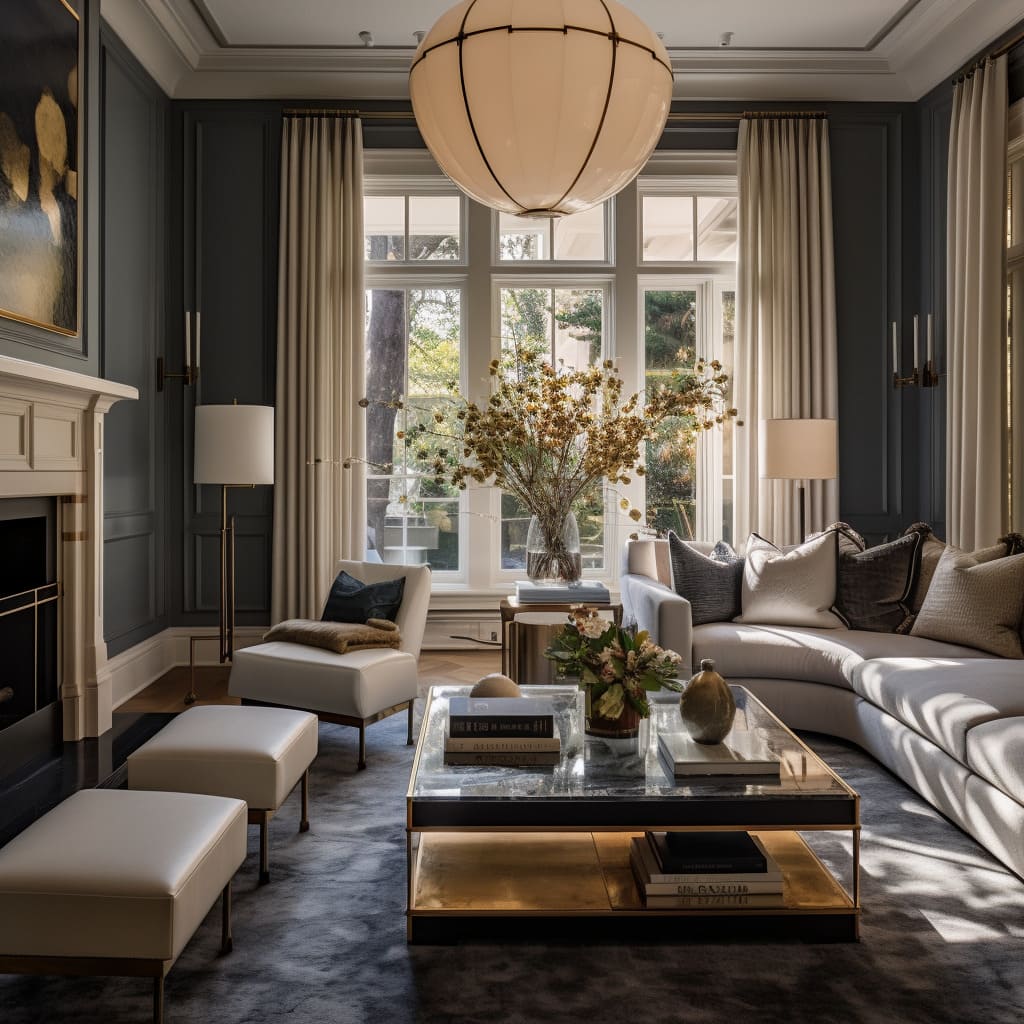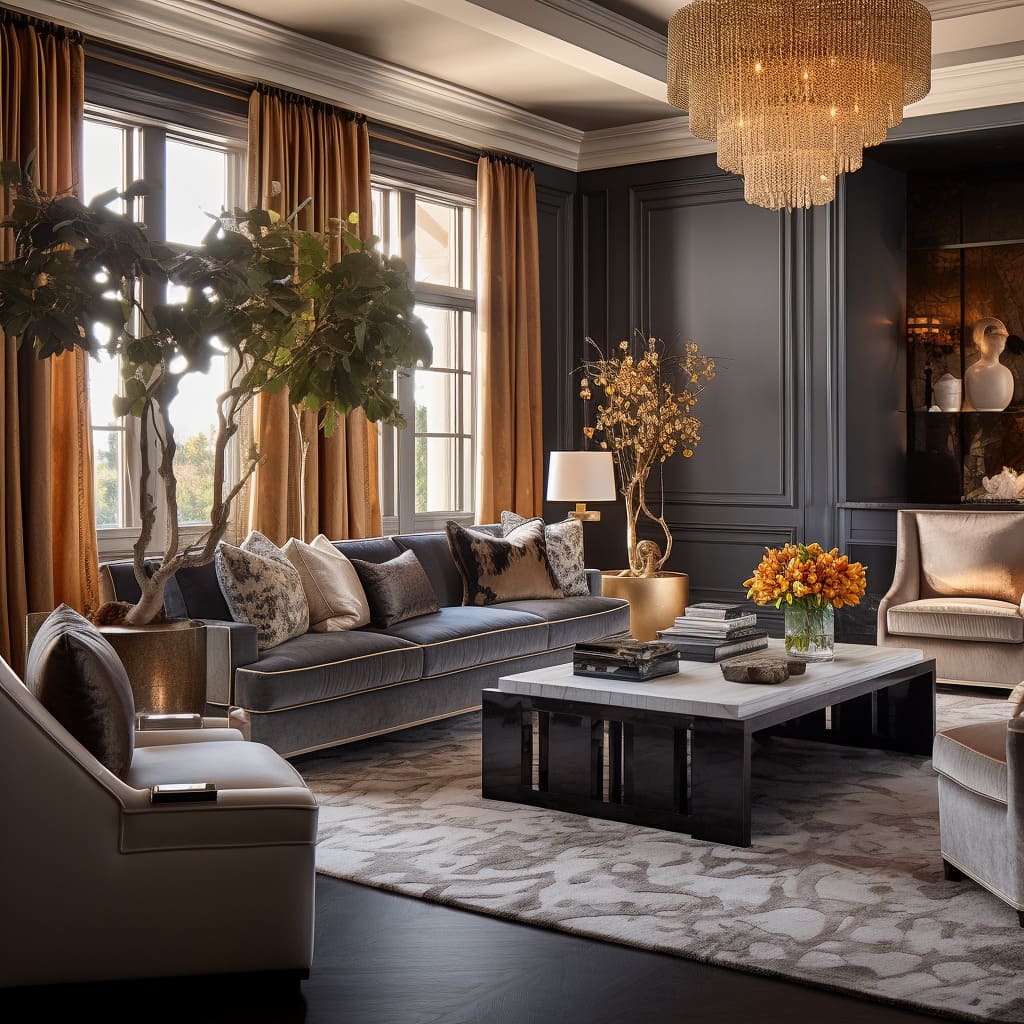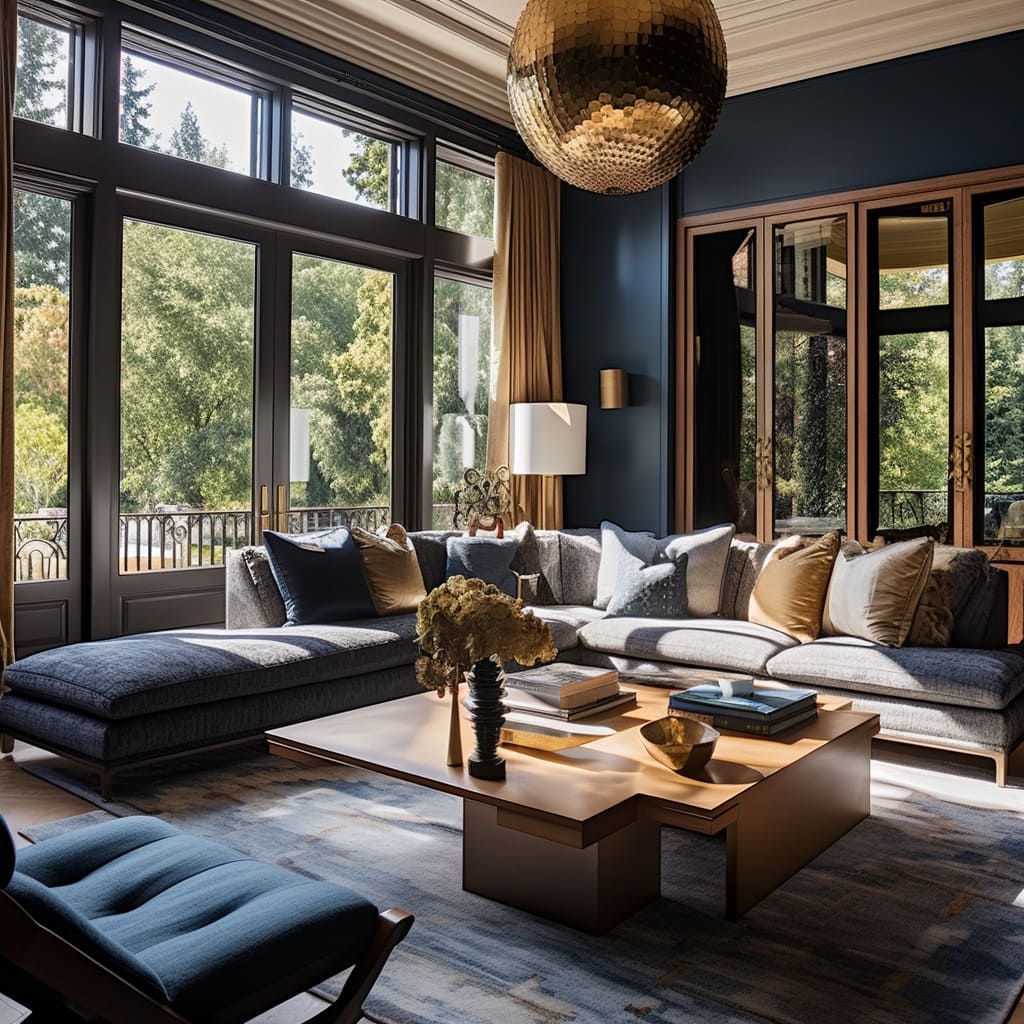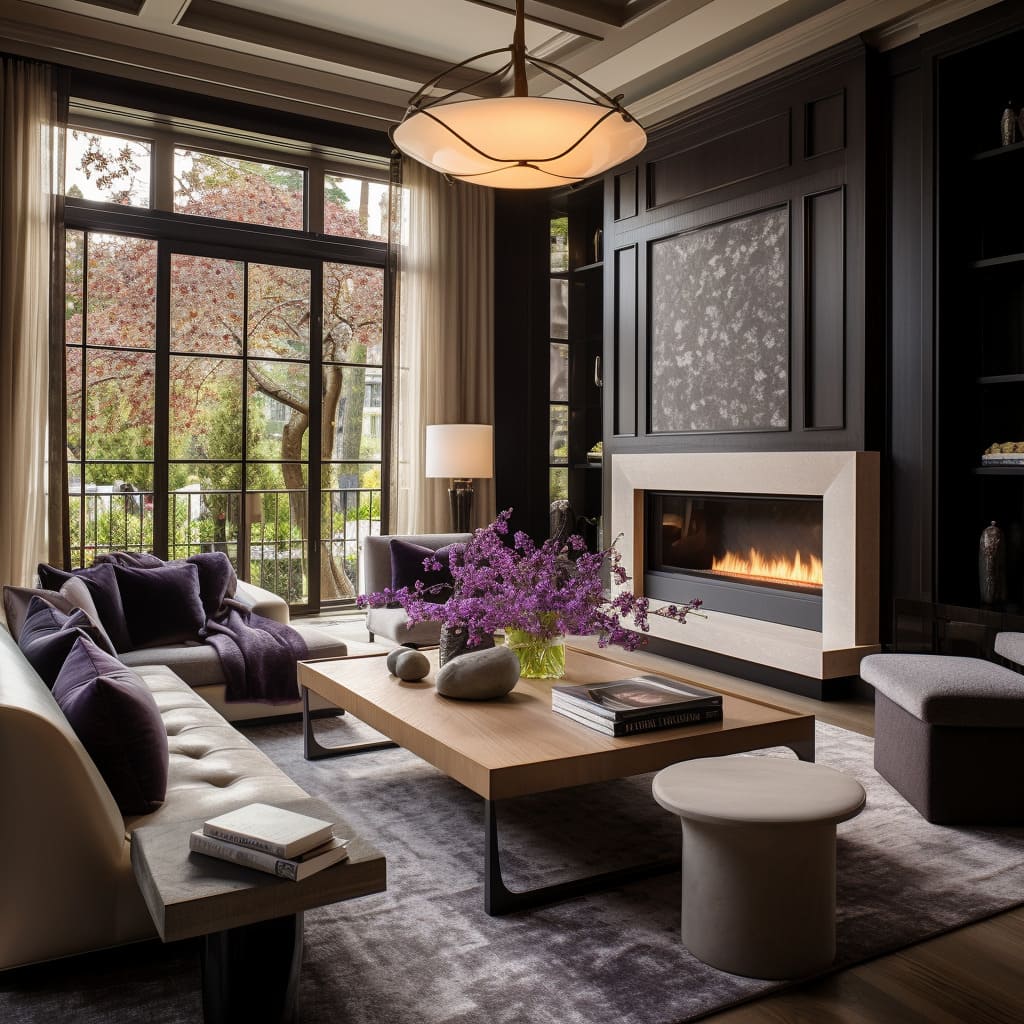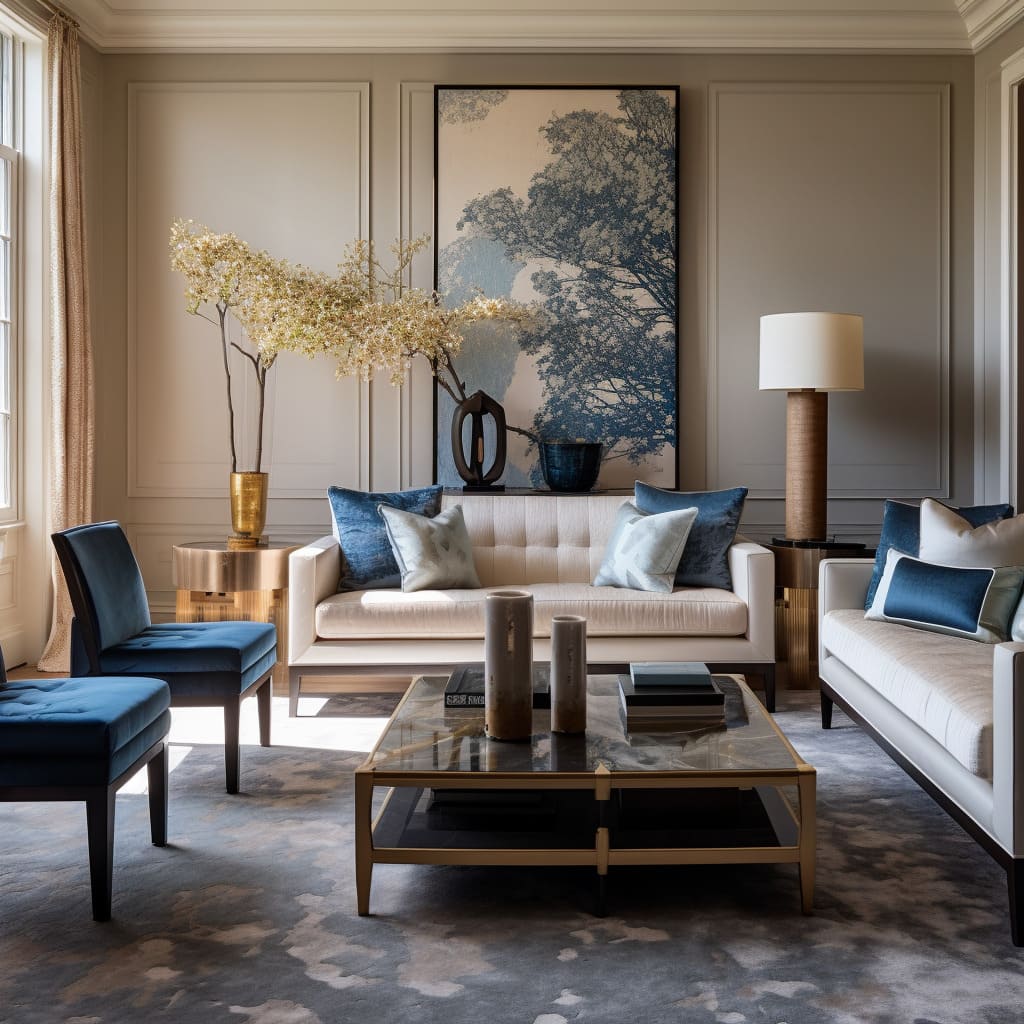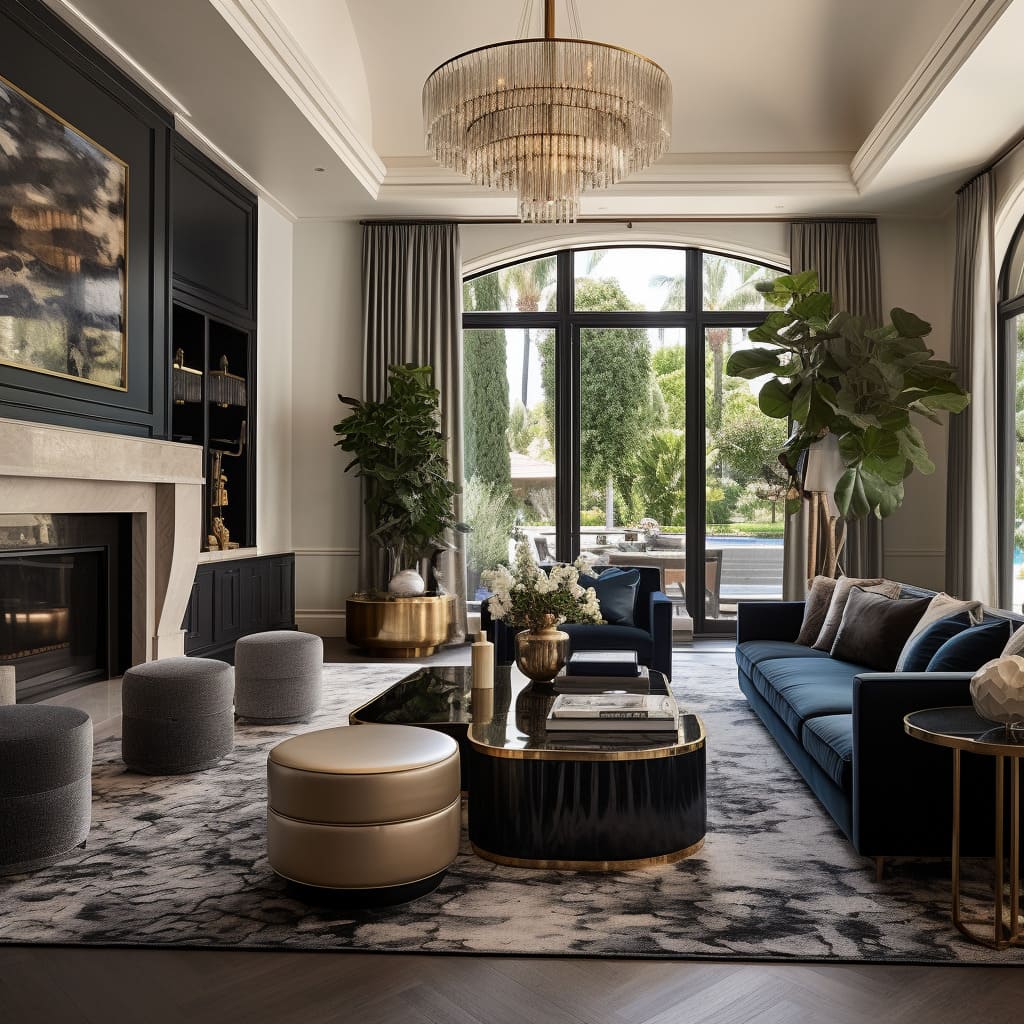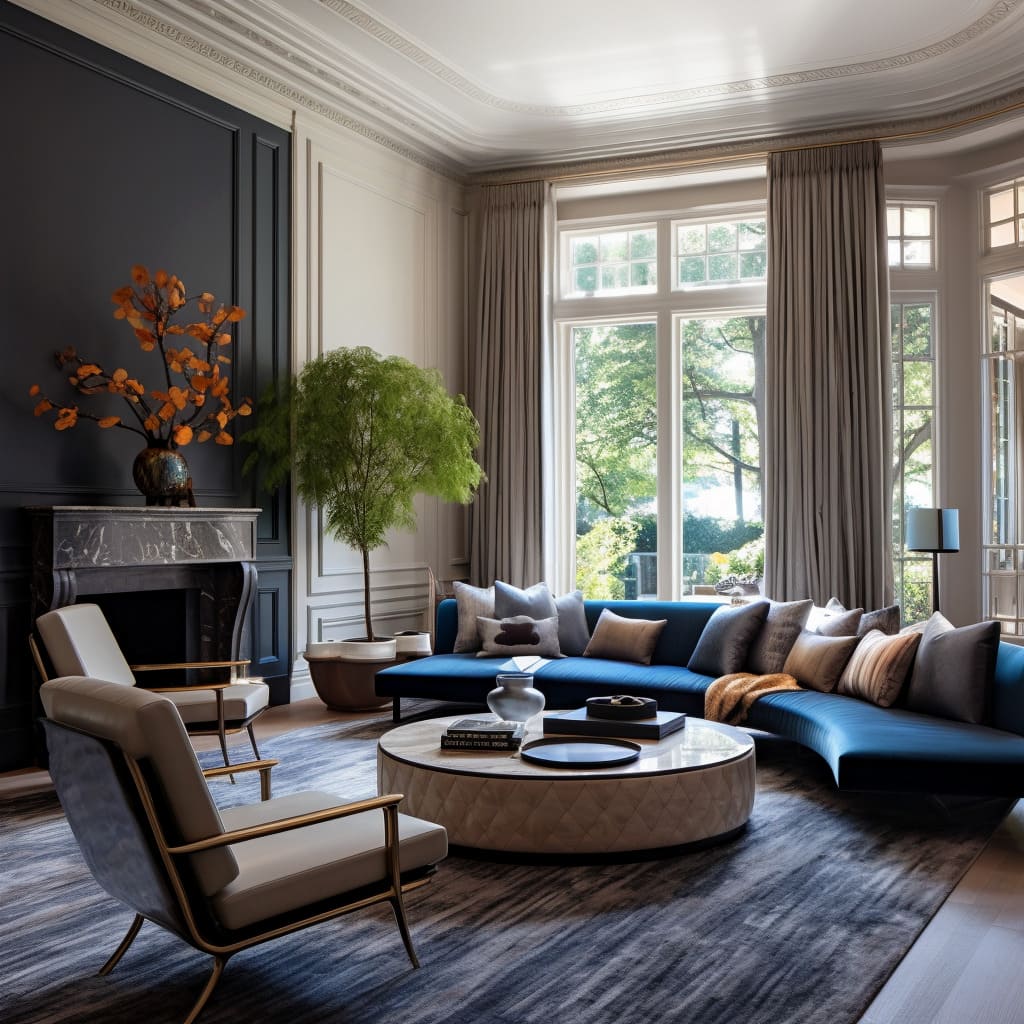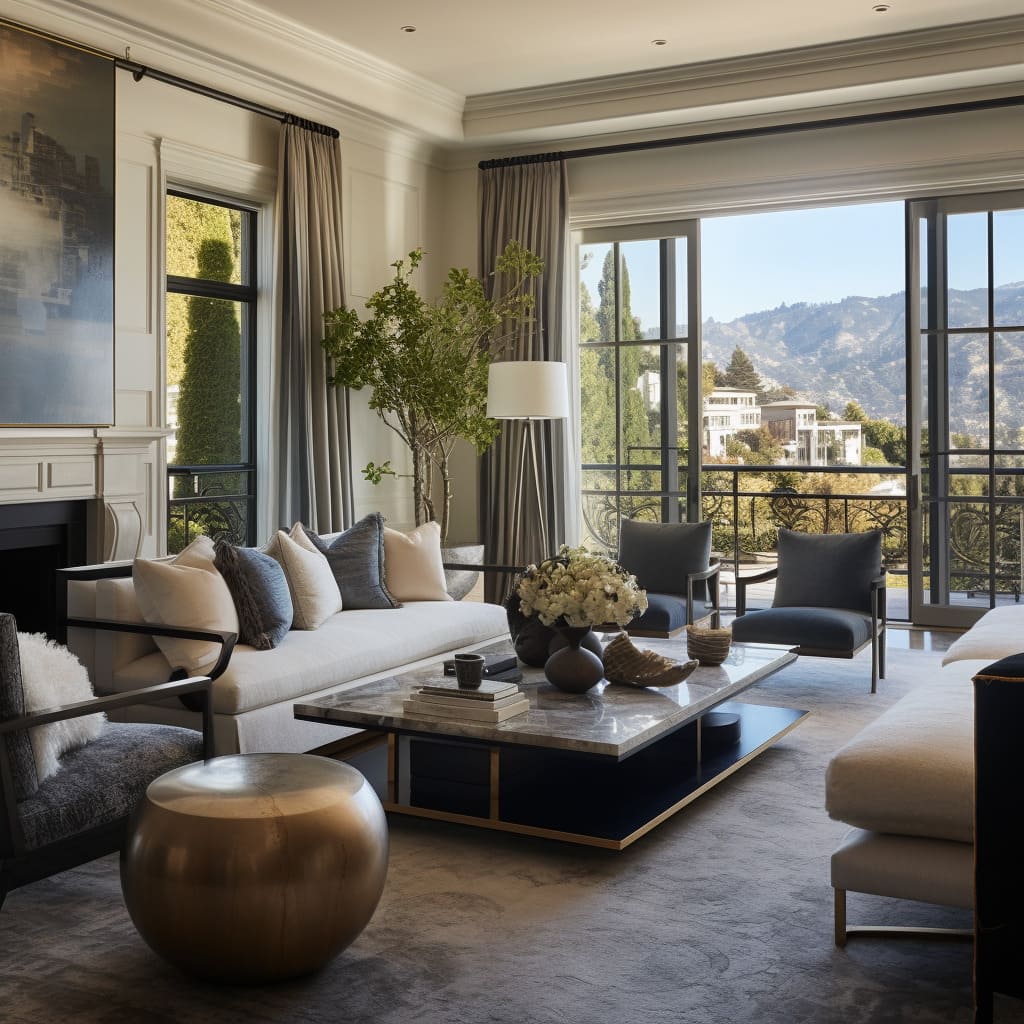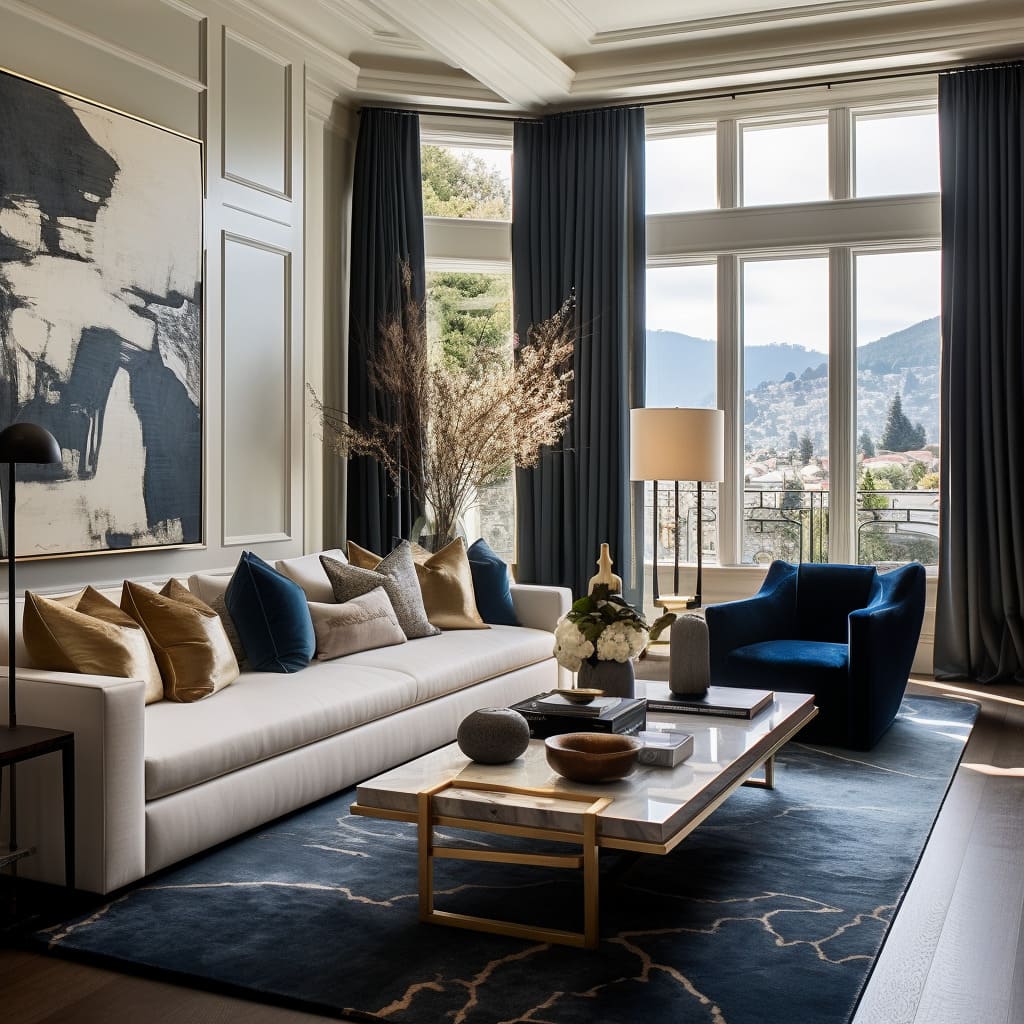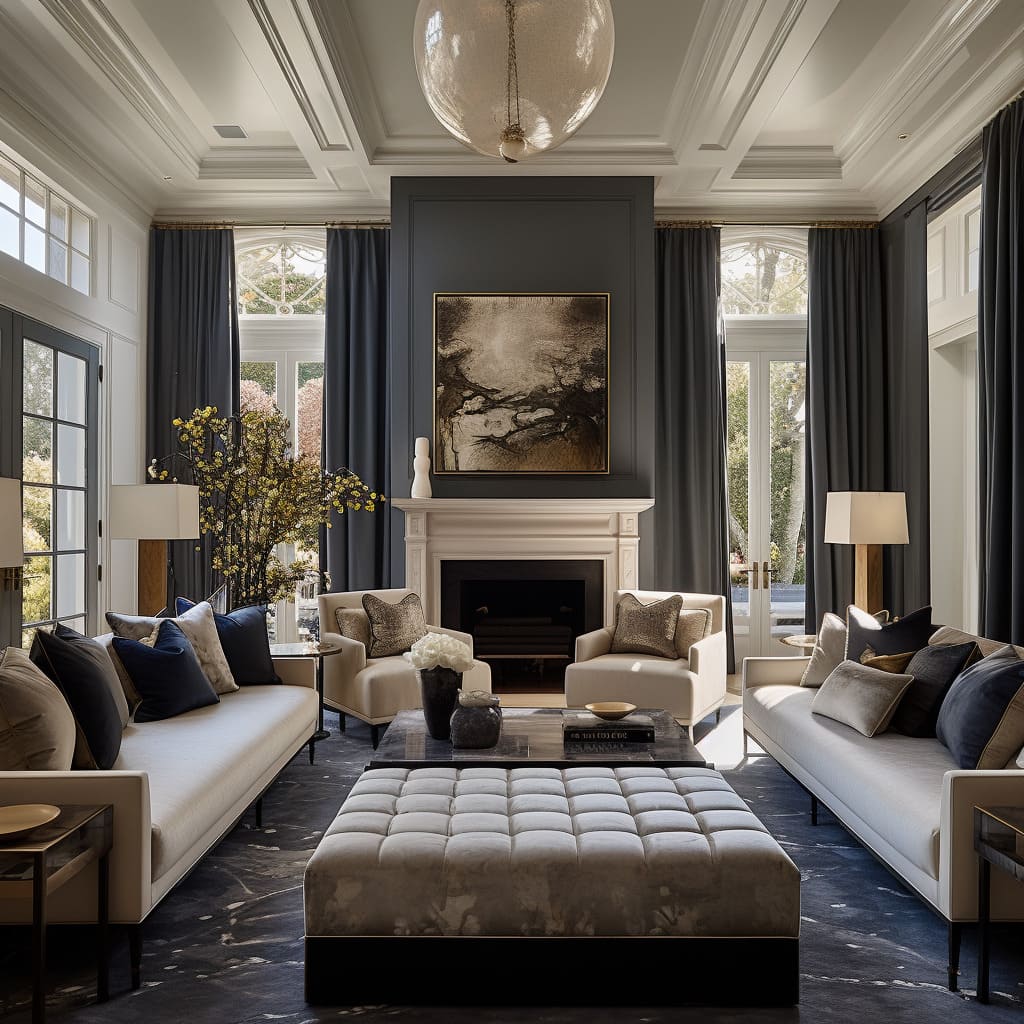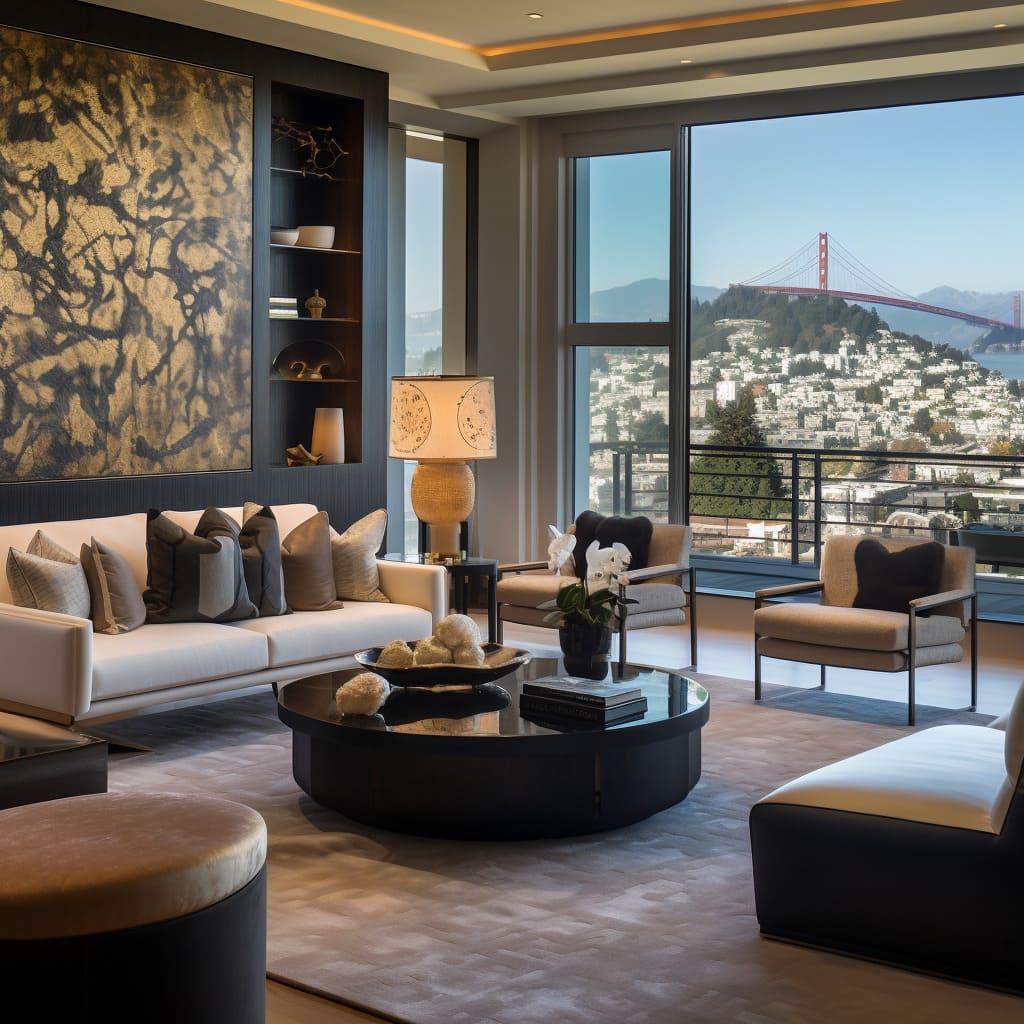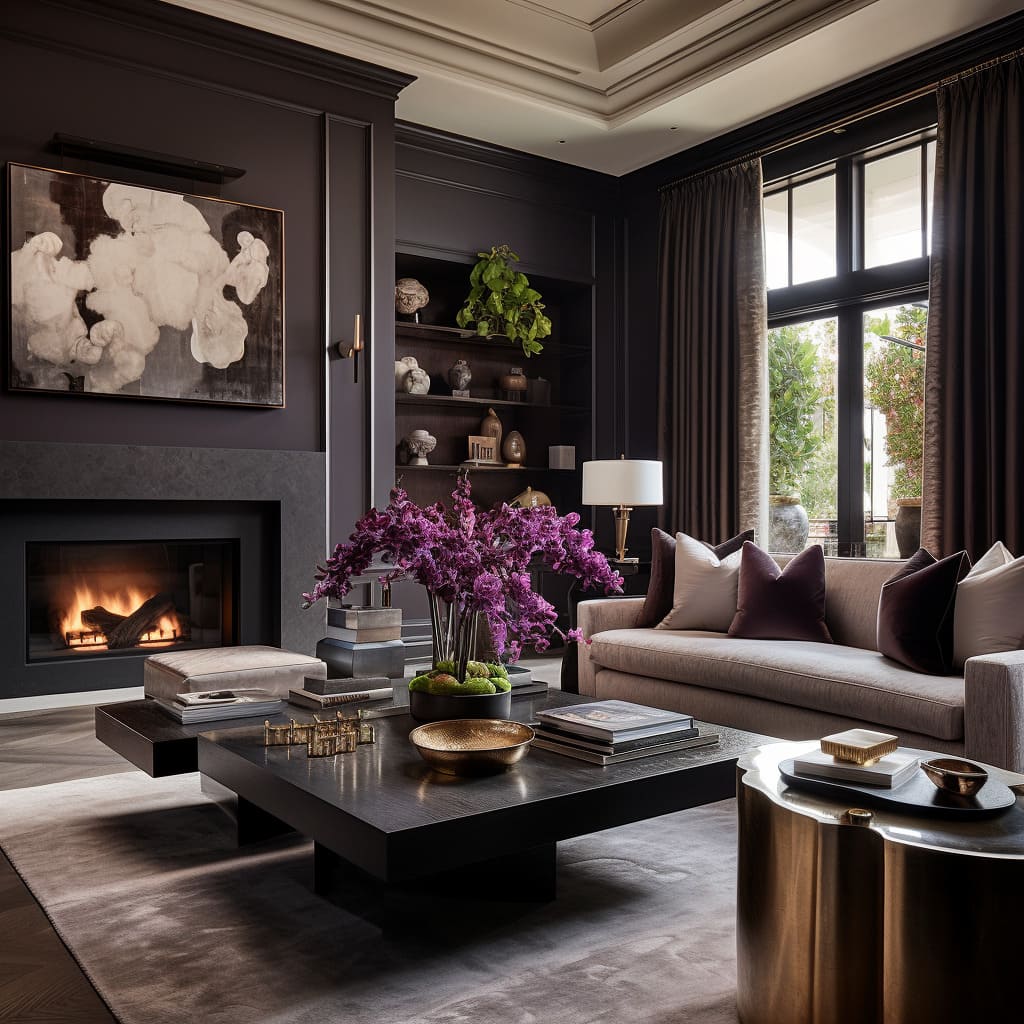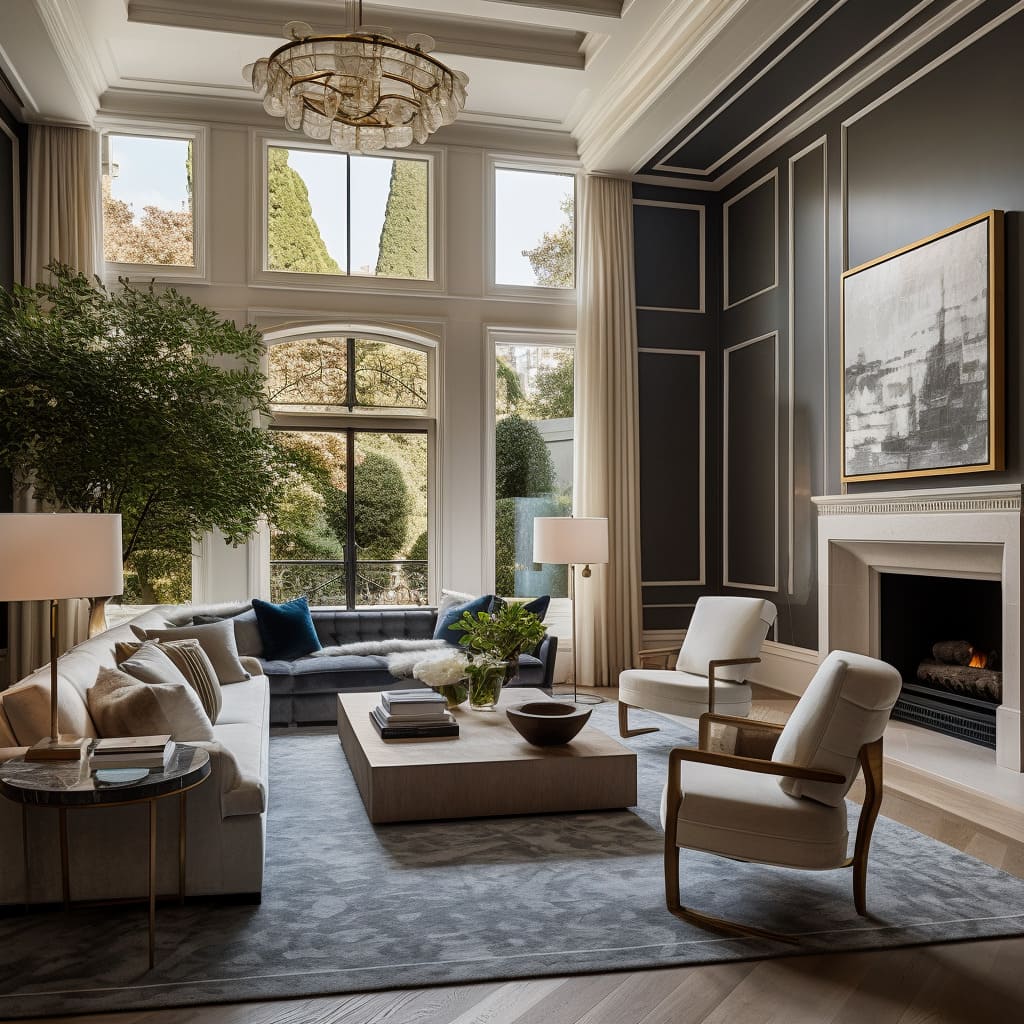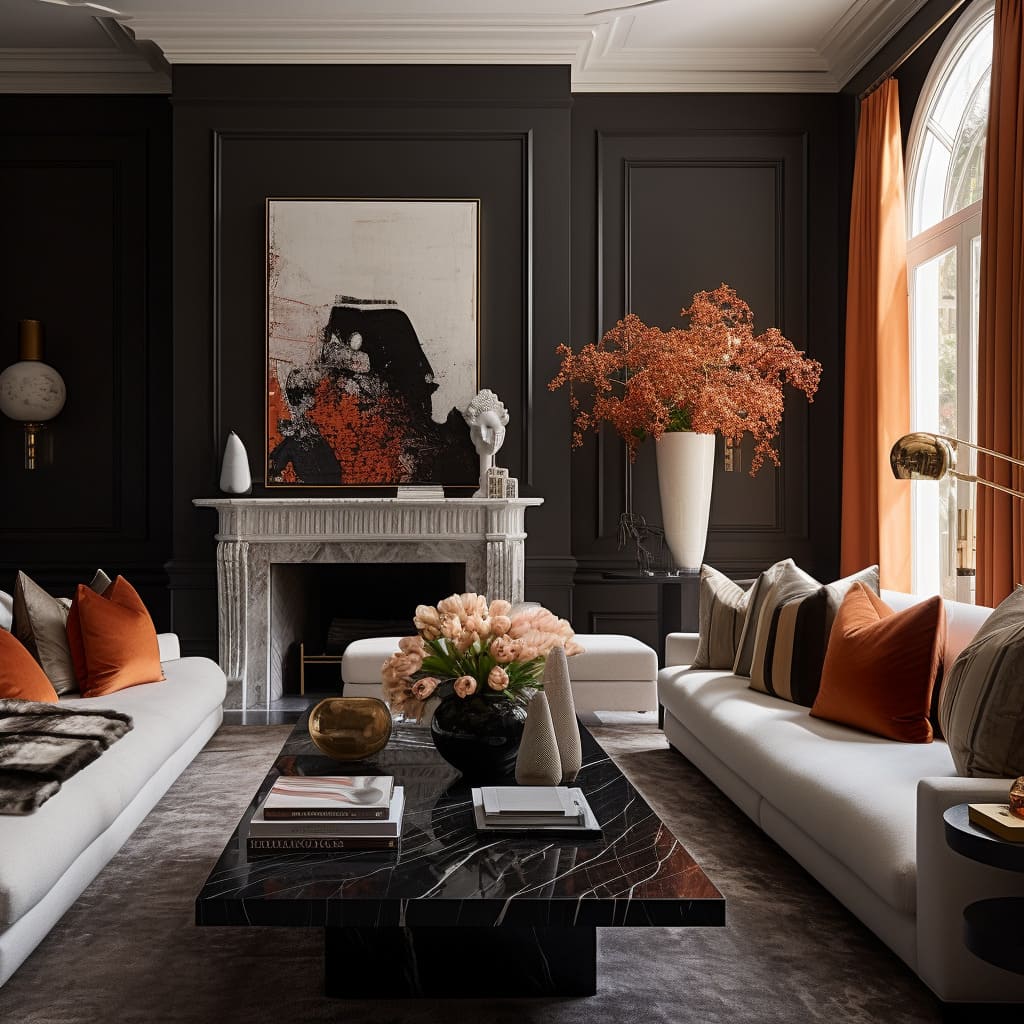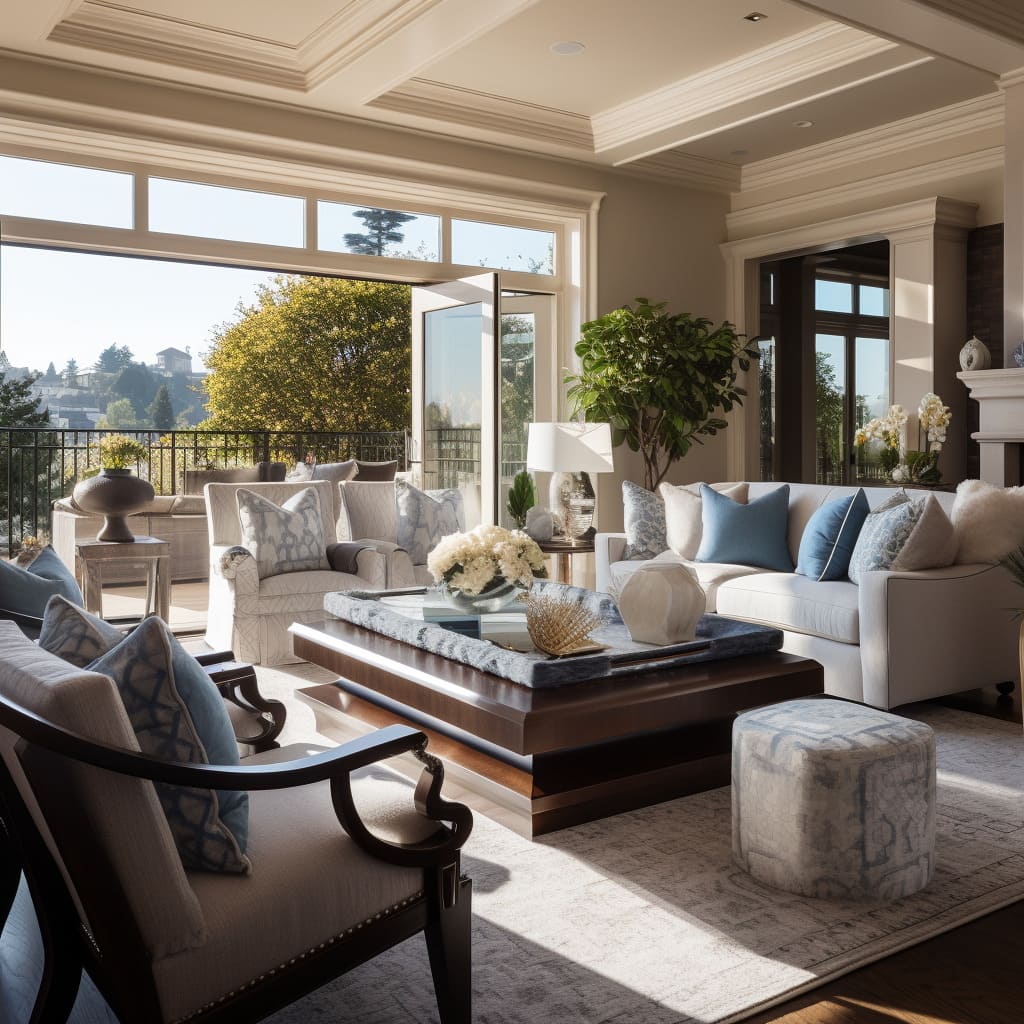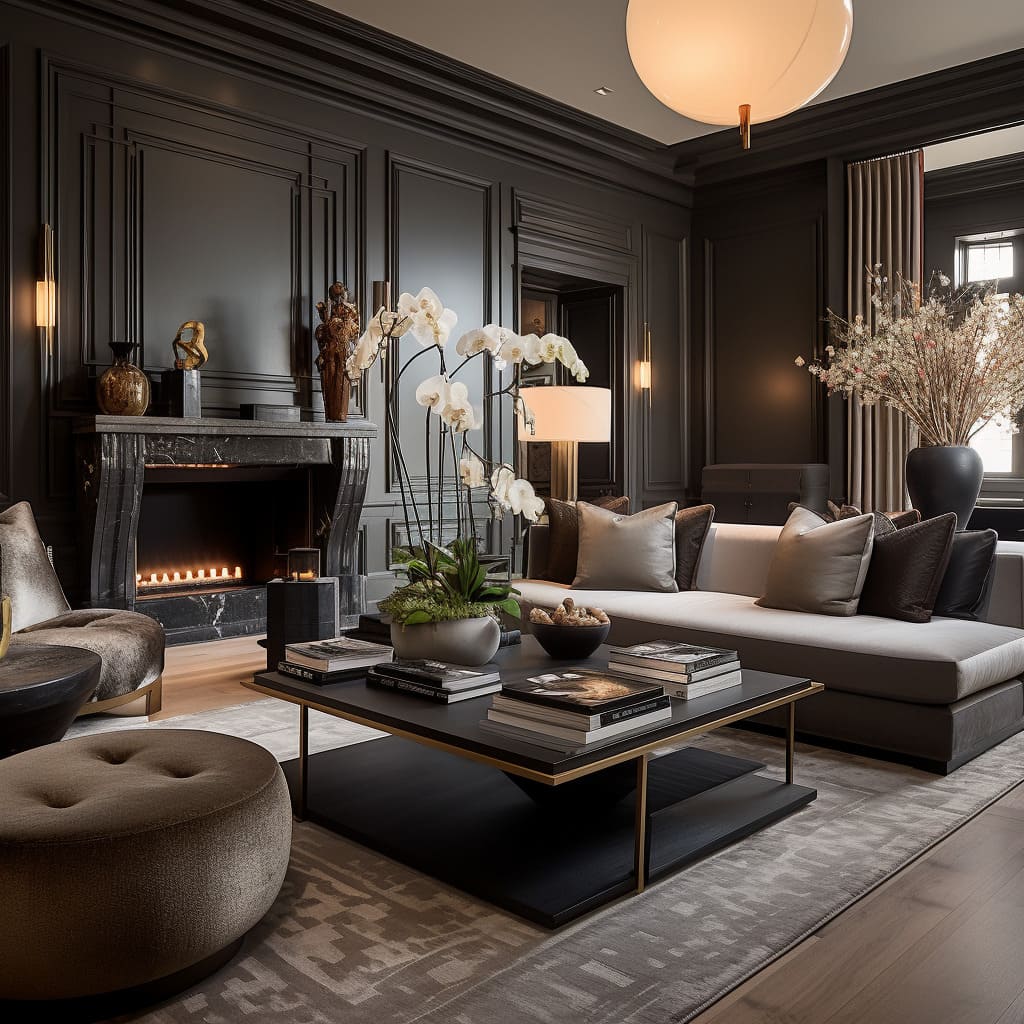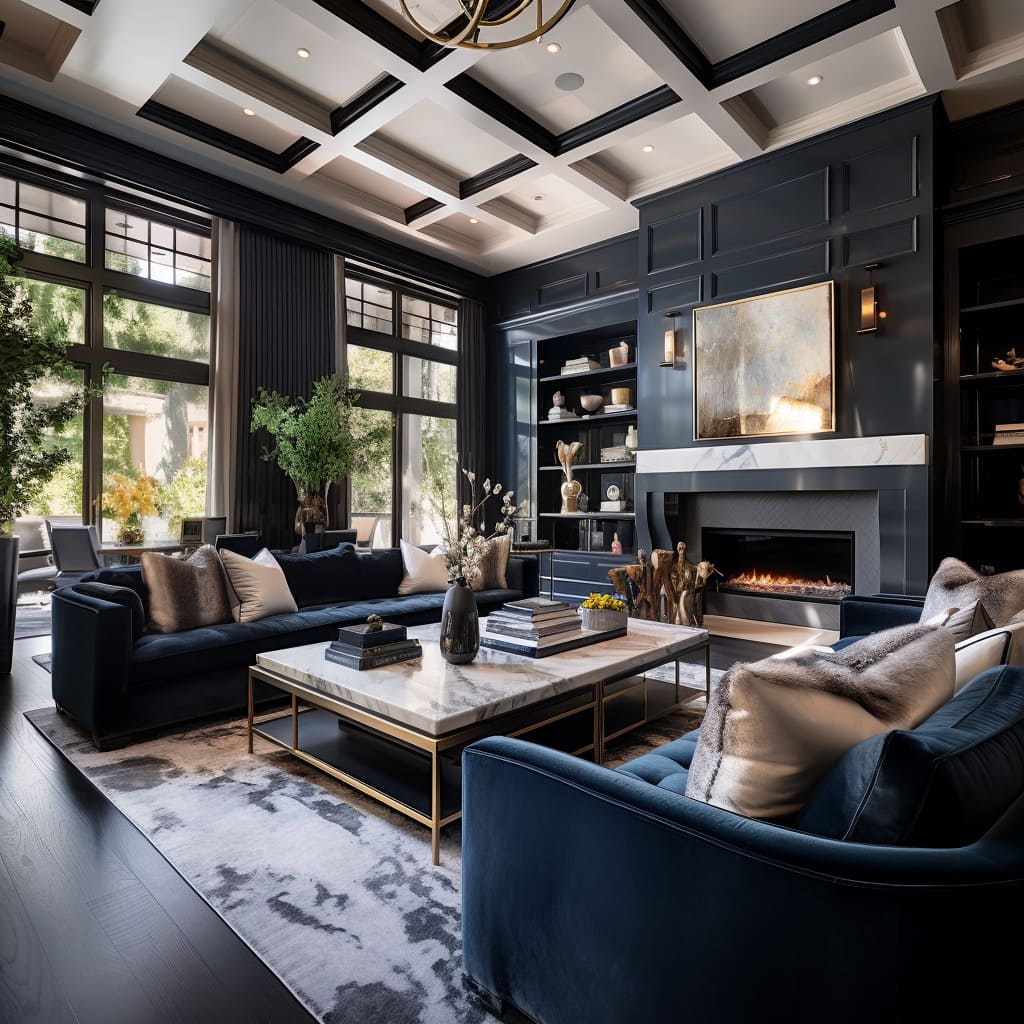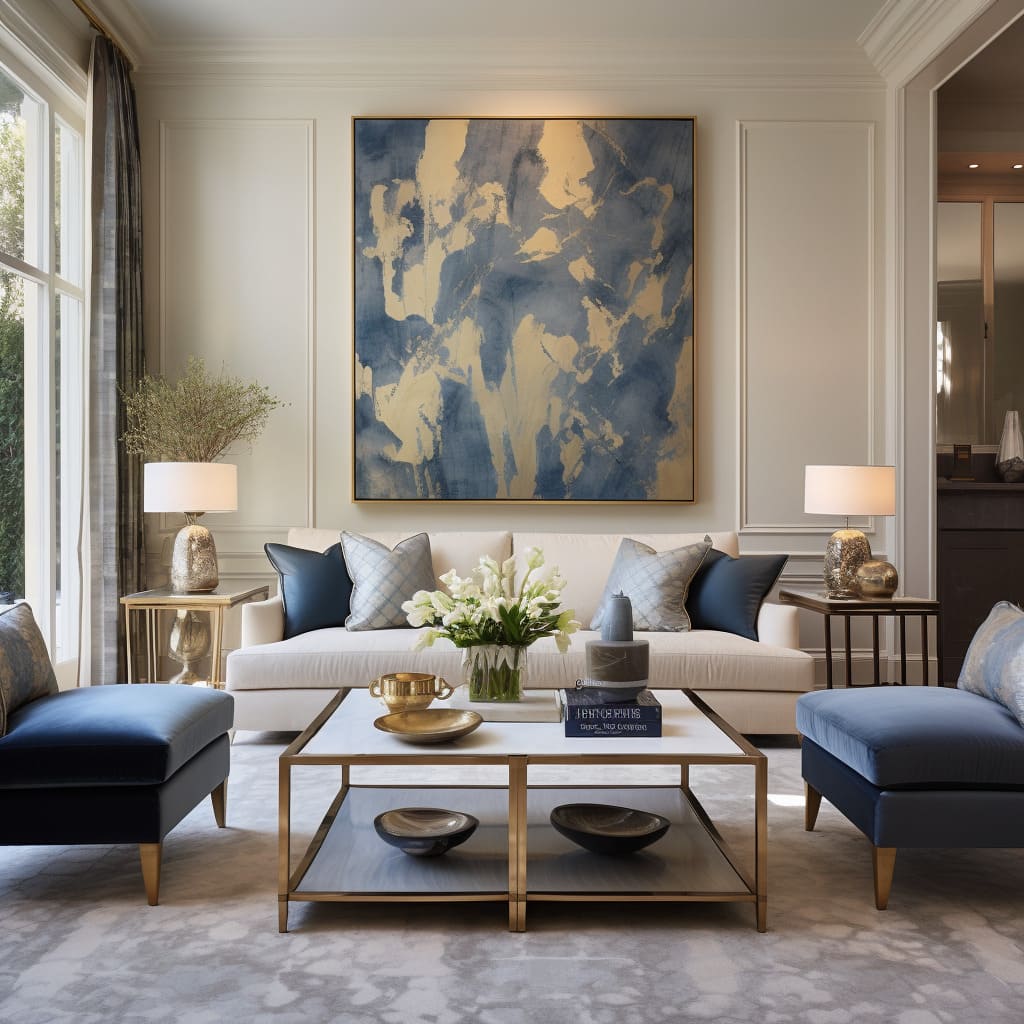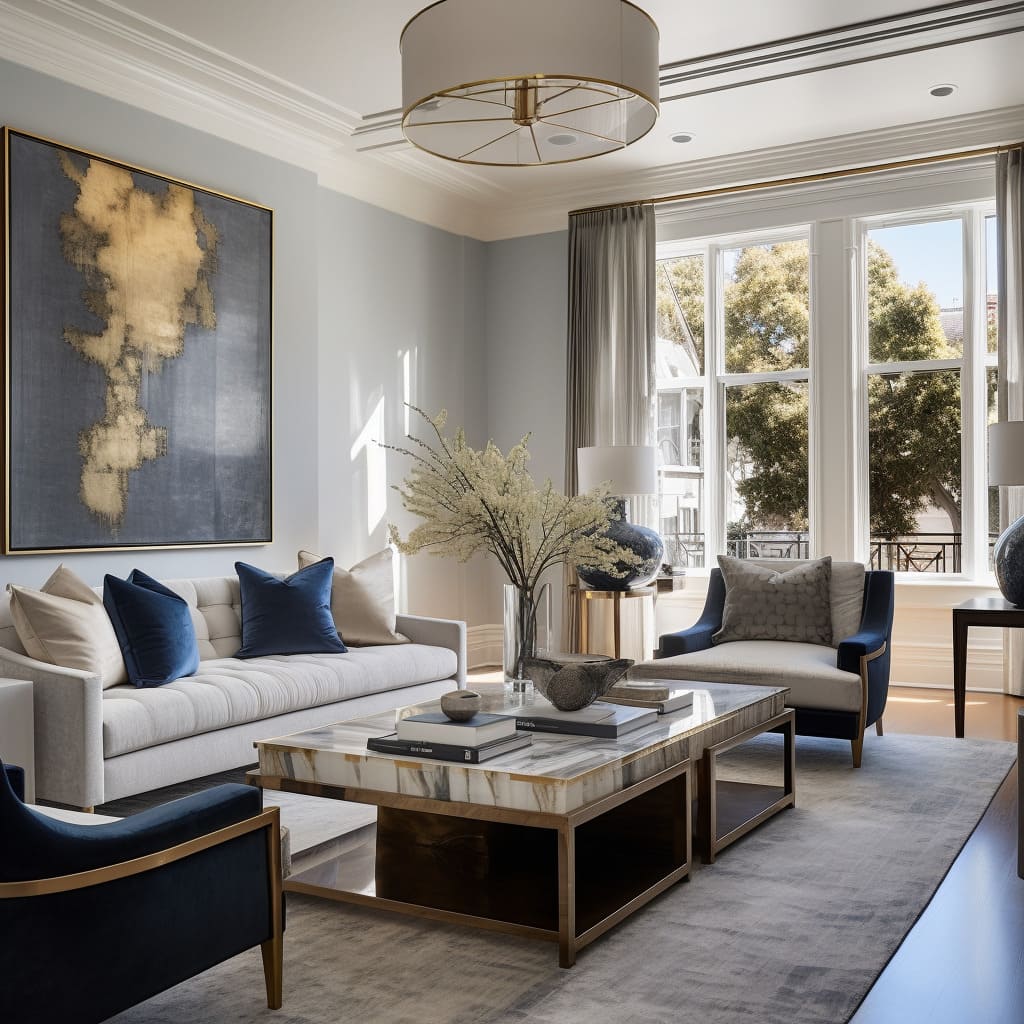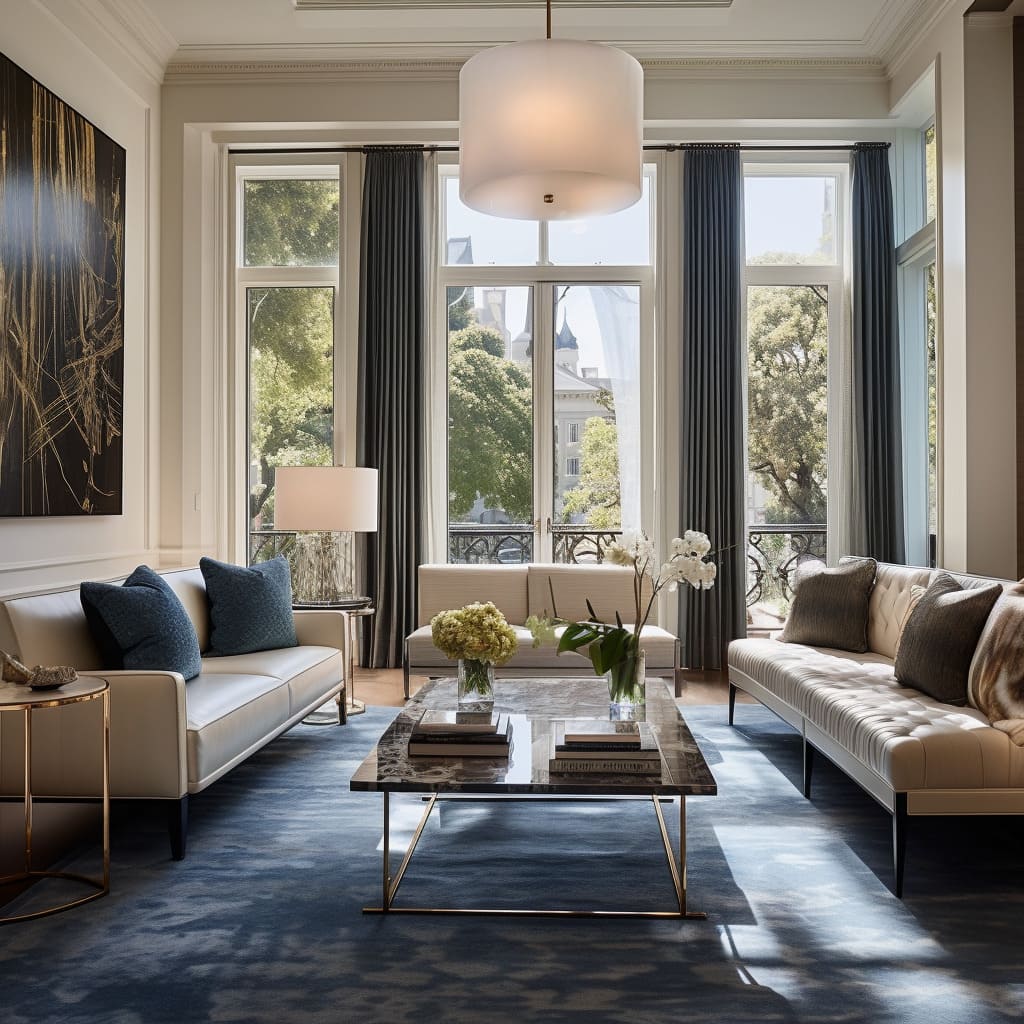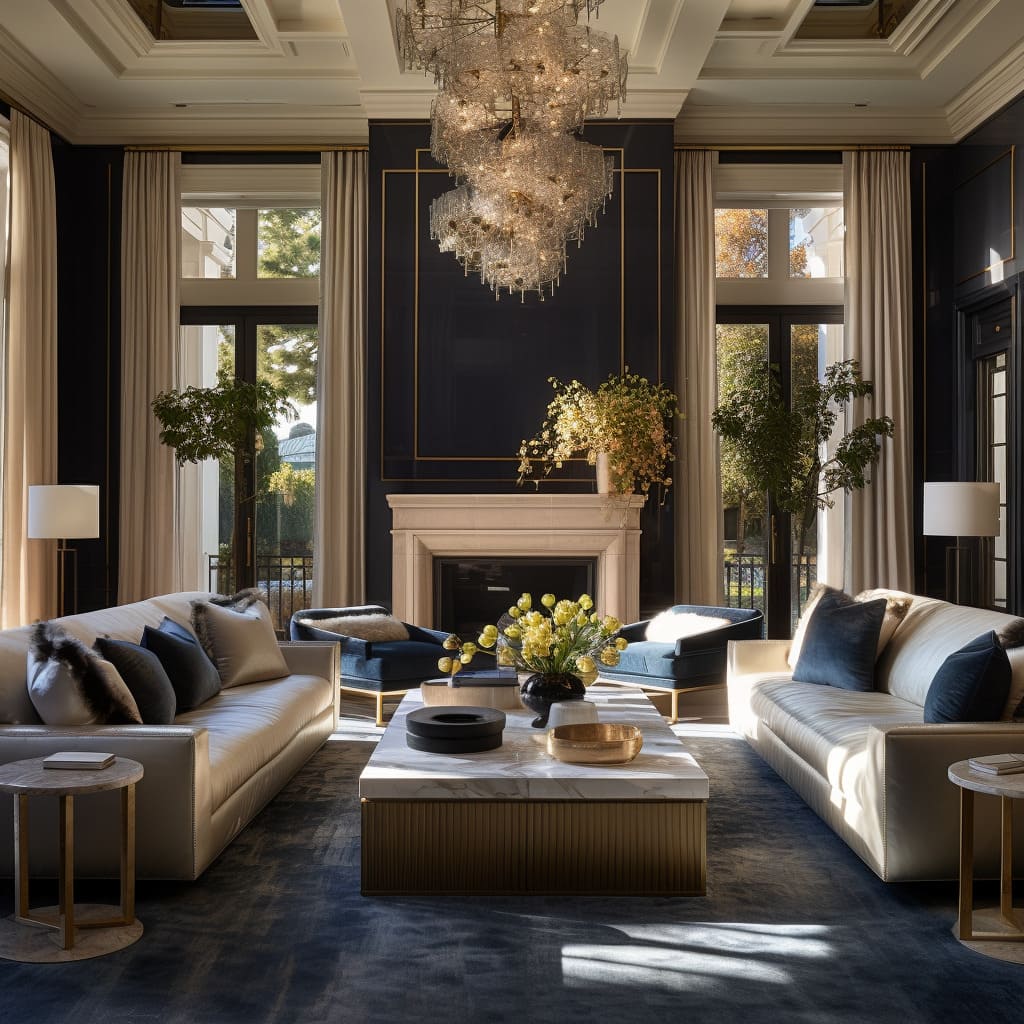In the dynamic world of interior design, the fusion of modern and transitional styles has emerged as a trendsetter, striking a perfect balance between innovation and tradition. This article delves into the art of blending these two distinct design philosophies, highlighting how they can coalesce to create spaces that are both sophisticated and welcoming.
From the subtle interplay of colors and textures to the strategic selection of furniture and fabrics, each aspect is meticulously woven together to form interiors that resonate with timeless elegance and contemporary flair. As we explore these design principles, we uncover the secrets to crafting interiors that are not only aesthetically pleasing but also functional and harmonious, embodying the essence of modern-day living.
Blending Transitional and Modern Styles in Interior Design
The elegance of interior design often lies in the seamless blend of various styles, creating spaces that are as timeless as they are contemporary. This concept is beautifully illustrated through the use of transitional and modern design elements in various rooms.
Each space embodies a unique combination of classic and contemporary touches, resulting in an atmosphere that is both serene and sophisticated.
Transitional elements are visible in the classic lines of furniture and the use of plush seating arrangements. These traditional aspects are skillfully combined with modern features, such as minimalist decor and sleek tables.
The color palettes are generally neutral, with harmonious shades of cream, beige, and blue, contributing to the overall sense of calm and welcome in these spaces. Modern artwork and sophisticated lighting choices, including recessed lights and classic chandeliers, add layers of warmth and sophistication.
In some rooms, the transitional style takes on a more dramatic form, with bold colors and rich textures creating a luxurious and refined environment. Deep blues, dark woods, and golden accents are balanced with natural light and indoor plants, softening the boldness while adding freshness.
Elsewhere, the interplay of rich wall tones with lighter furniture hues demonstrates a harmonious balance that characterizes the blend of modern and transitional styles. The incorporation of modern geometric patterns and clean furniture lines complements traditional elements like fireplaces and bookshelves, adding depth and historical context.
The spaces are airy and open, with light-filled rooms and soft color schemes that emphasize the transitional style’s classic layout and symmetry. Modern simplicity is evident in the styling of accessories and the clean lines of furniture.
Large windows in these rooms create a seamless connection with the outdoors, further enhancing the interior’s openness.
In all these designs, furniture is thoughtfully curated, with each piece contributing to a cohesive aesthetic. The blend of styles achieves a balanced look that is both sophisticated and comfortable.
Textural layers, from smooth marble to plush fabrics, add depth and interest. The use of consistent neutral and blue tones unifies the spaces, while a mix of various lighting types highlights the best features of each room.
Small decor accents, such as custom candles, can further personalize the space while subtly complementing the room’s color scheme and overall aesthetic. These pieces not only add warmth and character but also offer an easy way to tie modern and transitional elements together through scent, design, and texture.
Art pieces are carefully chosen to serve as focal points without overwhelming the space. These designs showcase meticulous attention to detail and a clear vision for creating inviting, elegant, and functional living spaces.
The Fabric Fusion: Integrating Modern and Transitional Design
Fabrics are a cornerstone in merging modern and transitional styles, acting as a unifier and a contrasting element that highlights the unique qualities of each style. This integration is achieved through careful selection of textures, colors, patterns, scale, and functionality of fabrics, all contributing to the space’s ambiance and aesthetic.
Texture’s Influence:
Fabric textures significantly impact the mood of a room. Transitional designs often feature plush textures like velvet or chenille, enhancing warmth and depth.
These fabrics are common in upholstery, drapes, and pillows, offering comfort and luxury. In contrast, modern design leans towards smoother textures like leather, linen, and tightly woven materials, reflecting its minimalist ethos.
The interplay of these textures creates a sophisticated, layered look. For instance, pairing a sleek leather sofa with a velvet throw pillow fuses modern sleekness with transitional comfort.
Color Palette Choices:
Fabrics in these designs usually come from a neutral palette, providing a flexible background that supports both styles. Grays, beiges, creams, and navies act as a versatile canvas.
Yet, fabrics also allow for color pops that invigorate the space and underscore modern elements. For example, a bold, modern accent chair can become a focal point in a predominantly neutral, transitional room.
Patterns: A Blend of Traditions and Trends:
The approach to fabric patterns diverges and merges in these styles. Transitional patterns are often classic and subtle, featuring designs like damask or paisley.
Modern patterns, however, tend towards abstract and geometric. This blend might manifest in a traditional armchair reupholstered with a contemporary graphic print, or a modern sofa accented with transitional patterned pillows, balancing visual interest without overwhelming.
Balancing Scale and Proportion:
In blending styles, the scale of fabric patterns is crucial. Larger, transitional patterns can be offset by the simpler, often solid-colored fabrics of modern design.
This balance ensures that neither style dominates, maintaining harmony in the space.
Functionality and Comfort:
Beyond aesthetics, fabric choices in such interiors address practicality and comfort. High-performance, durable fabrics are favored for their blend of beauty and utility, crucial in transitional design which values both appearance and usability.
Creating Cohesion and Flow:
Designers use fabrics to seamlessly navigate between modern and transitional styles. Cohesion is often achieved by consistently using a particular fabric, or by repeating a color or pattern across various elements like window treatments, rugs, and upholstery.
In summary, fabrics are pivotal in unifying modern and transitional interior design elements. They offer tactile and visual dynamics, introduce colors and patterns, and enhance the space’s overall comfort and functionality.
Their role transcends mere decoration; fabrics are integral in shaping an interior’s character, ensuring it is inviting, harmonious, and aesthetically pleasing.
Harmonizing Color Palettes in Modern and Transitional Interiors
In the delicate art of blending modern and transitional interior designs, the color palette emerges as a vital unifying element. It harmonizes these distinct styles, creating a cohesive and appealing narrative.
The designs you’ve shared demonstrate several key roles of the color palette in this process:
Foundational Neutrals: The use of neutral colors like creams, beiges, taupes, and grays forms the foundation of these designs. This neutral base, characteristic of both modern and transitional styles, acts as a versatile canvas.
It allows for the introduction of additional colors and textures without overwhelming the space. Neutral walls and large furniture pieces provide timeless appeal, offering flexibility for changing trends and personal preferences.
Accent Colors for Depth: Accent colors, particularly various shades of blue from navy to sky, are strategically used to add depth and interest. Blue, a color that can feel both modern and classic, complements the neutral base.
It is introduced in upholstery, artwork, and accessories, providing vibrant yet balanced pops of color.
Metallics and Wood Tones: Elements like gold, brass, and other metallics are incorporated in lighting, decor, and furniture details, adding luxury and warmth. Their reflective qualities enhance the dynamism of the space.
Wood tones, varying from light to dark, bring an organic, timeless element to transitional spaces, balancing rustic and refined qualities.
Harmonizing Design Elements: The color palette plays a crucial role in merging modern simplicity with transitional detail. For instance, a sleek modern sofa in navy pairs seamlessly with a light gray, transitional wingback chair, thanks to the unifying color scheme.
Visual Flow in Open Spaces: In open-plan designs, repeating key colors in different shades and textures ensures a seamless visual flow. This unity is achieved by echoing colors like blue in various areas, like living and dining spaces, tying them together.
Psychological Impact of Colors: Color significantly influences the psychology of a space. Neutral tones create calmness and a sense of spaciousness.
In contrast, the sparing use of saturated colors adds sophistication and affects the room’s perceived temperature—cool blues for tranquility and warm metallics for coziness.
Balance and Contrast: The color palette is essential in balancing and contrasting modern and transitional elements. This balance is achieved using colors from the same family in different tones and saturation levels.
Contrast is introduced through bold modern art or a striking rug in a transitional setting.
Conclusion: The Art of Blending Modern and Transitional Design
In summary, the successful blending of modern and transitional design elements in interior decoration hinges on a harmonious balance of color, texture, and form. This approach creates spaces that are both timeless and contemporary, offering a seamless amalgamation of comfort and style.
The thoughtful use of neutral bases paired with strategic pops of color, the interplay of plush and sleek textures, and the incorporation of both classic and modern patterns and furnishings, all contribute to an aesthetic that is cohesive and inviting. This blend not only caters to the visual appeal but also considers functionality and the psychological impact of design elements.
Ultimately, these interiors exemplify how diverse design languages can coexist beautifully, creating environments that are both visually striking and comfortably livable.

